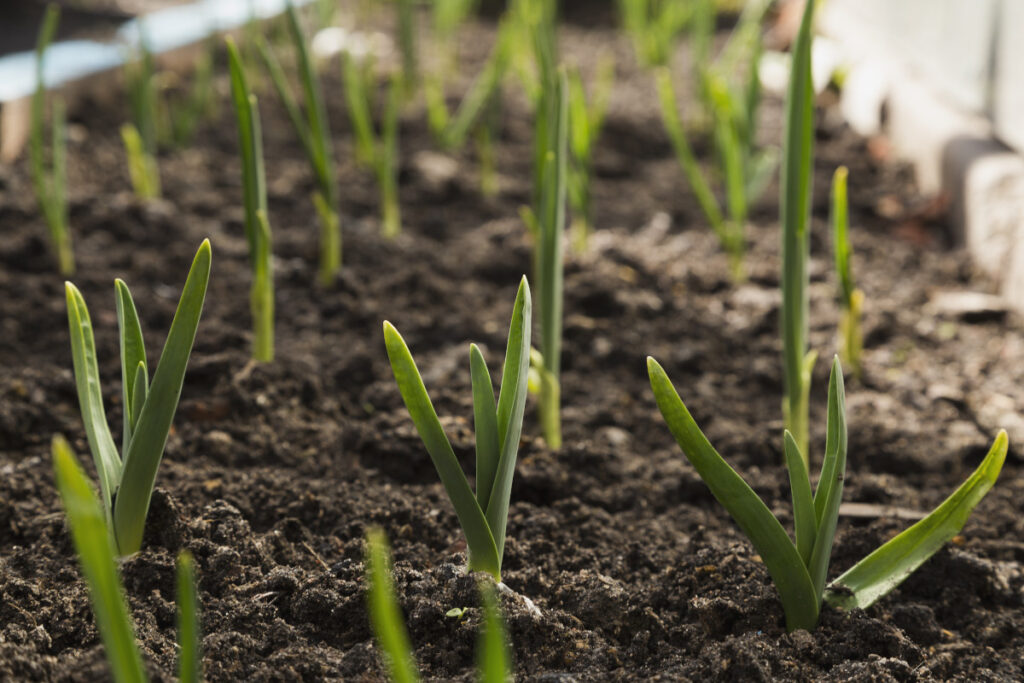Garlic is a staple ingredient in many dishes, adding depth and flavor to countless recipes. But did you know that there are two main types of garlic? Hardneck and softneck garlic are the two most commonly grown varieties, and they each have distinct characteristics that make them unique. In this article, we’ll explore the differences between hardneck and softneck garlic, including their taste, appearance, and growing habits.
What is Hardneck Garlic?
Hardneck garlic, also known as top-setting garlic, is a type of garlic that produces a woody stem or scape in the center of the bulb. This stem usually has a curly or twisted appearance and can grow up to 2 feet tall. The cloves of hardneck garlic are larger than those of softneck garlic, and they have a stronger, more complex flavor.
One of the defining characteristics of hardneck garlic is its ability to produce bulbils, which are small bulbs that grow on the scape. These bulbils can be planted to grow new garlic plants, making hardneck garlic an excellent choice for those who want to grow their own garlic.
What is Softneck Garlic?
Softneck garlic, sometimes called artichoke garlic, is a type of garlic that does not produce a stem or scape in the center of the bulb. Instead, the cloves are arranged in a tight, concentric pattern, giving the bulb a more uniform appearance. Softneck garlic has a milder flavor than hardneck garlic, making it a popular choice for recipes where a more subtle garlic flavor is desired.
One of the benefits of softneck garlic is its longer shelf life. Because it does not produce a stem, the bulbs are easier to braid, which allows them to be hung up and stored for longer periods of time.
You will also likely get more cloves from softneck, but the center cloves (where hardneck has a stem) will be smaller.
What are the differences between softneck and harneck garlic?
Differences in Taste
One of the most noticeable differences between hardneck and softneck garlic is their taste. Hardneck garlic has a stronger, more complex flavor with hints of spiciness and sweetness. It is often described as having a “hot” or “bold” flavor that can be overpowering in some dishes.
Softneck garlic, on the other hand, has a milder, sweeter flavor that is less pungent than hardneck garlic. It is often used in recipes where a more subtle garlic flavor is desired, such as in soups, stews, and marinades.
Differences in Appearance
Another way to tell the difference between hardneck and softneck garlic is by their appearance. Hardneck garlic has a long, woody stem in the center of the bulb, which often has a curly or twisted appearance. The cloves of hardneck garlic are usually larger than those of softneck garlic, and they are arranged in a looser, more irregular pattern.
Softneck garlic, on the other hand, has a more uniform appearance, with cloves arranged in a tight, concentric pattern. Because it does not produce a stem, the bulbs are flatter and easier to braid, making them a popular choice for decorative purposes.
Growing Habits
Both hardneck and softneck garlic are relatively easy to grow, but they have different growing habits. Hardneck garlic is typically grown in cooler climates, as it requires a period of cold weather to develop properly. It is also more susceptible to disease than softneck garlic, so it requires more attention and care.
Softneck garlic, on the other hand, is more adaptable to a variety of growing conditions, making it a popular choice for home gardeners. It is also more resistant to disease than hardneck garlic, which makes it a low-maintenance option for those who want to grow their own garlic.
What conclusion should I make about garlic varieties?
Hardneck and softneck garlic are two of the most commonly grown varieties of garlic. While they both share similar health benefits and culinary uses, they differ in terms of taste, appearance, and growing habits. Hardneck garlic has a stronger, more complex flavor with a spicy and sweet taste, while softneck garlic has a milder, sweeter flavor that is less pungent. Hardneck garlic has a woody stem in the center of the bulb and produces larger cloves, while softneck garlic has a more uniform appearance and is easier to braid. Hardneck garlic requires a colder climate to grow properly and is more susceptible to disease, while softneck garlic is more adaptable to different growing conditions and is more resistant to disease.
Both types of garlic are versatile ingredients that can add flavor to a wide range of dishes. If you are planning to grow your own garlic, it’s important to consider the differences between hardneck and softneck garlic, as well as the growing conditions in your area. Whichever variety you choose, growing your own garlic can be a rewarding and flavorful experience that can enhance your culinary creations.
